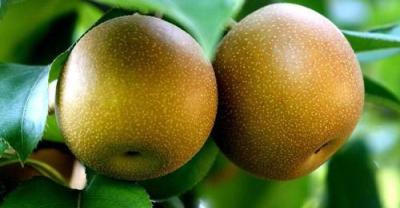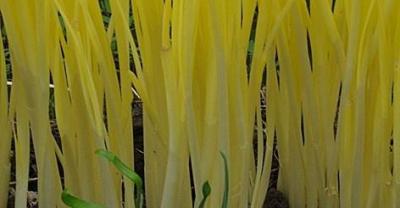Planting and cultivation techniques of Sugar Pear
Cultivation techniques of sugar pear
1 Variety configuration
Most varieties of pears need pollen from other varieties to bear fruit. When we build gardens, besides selecting good main varieties, suitable pollination varieties should also be configured well. As a pollinated variety, it should have high economic value and high yield, and at the same time, it should adapt to local conditions. When pollinating with the main cultivated variety, pay attention to good affinity, and the flower quantity and pollen quantity of this variety should be large. At the same time, the germination rate of pollen should also be high. It should have the same flowering period as the main cultivated variety. Pay attention to the number of pollinated varieties should not be too much. Generally, it is 3~4 rows of main varieties, and 1 row of pollinated varieties is allocated.

2 Density of planting
The planting density should be paid attention to according to the different conditions of climate, soil, rootstock, agricultural technology and variety. The planting density adopted is also different according to different conditions. When planting density is low, the plant spacing is 3~4 m, the row spacing is 4~5 m, and the number of plants per 667 m2 is 33~56. At medium and high planting density, plant spacing was 2~2.5 m, row spacing was 3.5~4 m, and the number of plants per 667 m2 was 66~95.
3. Soil and fertilizer management
3.1 Requirements of phenology for soil, fertilizer and water
Pear tree has seasonal climate change in a year, seasonal emergence of buds, flowering, leaves, buds branching, vigorous growth, leaf picking to adapt to rhythm changes. Nitrogen fertilizer can be applied before germination in vegetative growth period, phosphorus fertilizer should be applied after 20~30 days or fruit expansion period. The flowering period is in the middle and late November, the sunshine is short, the temperature drops below 15 ℃, and when the day and night temperature of leaves increases, it enters dormancy period. The lower the temperature, the more mature the tree dormancy, sufficient stored nutrients, strong growth of branches, plump, strong winter weather resistance.
3.2 Fertilization and irrigation management
Natural fertilizers such as green manure, garbage, manure, compost, sludge, ash, soil and so on can be widely used. By observing the growth, thickness, length, bud, leaf color and other signs of pear trees, observing climate change, determining fertilization and irrigation, high temperature and dry weather, combining irrigation and fertilization, determining fertilization and soil management according to different conditions of soil and terrain. Poor soil, fertilizer should be heavy humus fertilizer.
3.3 Shi
Fertilization period and method Fertilization period, after fruit harvest, until the next year before germination can be applied, pure nitrogen 6.2 kg, pure phosphorus 4.8 kg, pure potassium 5.2 kg per plant. The method comprises the following steps of: circular ditching annular groove with width of 67 cm and depth of 30 - 60 cm; digging radial grooves on the trunk around the center, uniformly distributing 4 - 8 radial grooves with width of 67 cm and depth of 67 cm and inner arc depth; arc-shaped grooves on both sides of the tree crown, and opening holes on both sides in the next year; and the position, depth and width of the lower ring at 4 - 8 points are 45 - 67 cm.

4 Shaping and pruning
4.1 Xiu
The pruning period and method of winter dormancy pear after pruning in winter; summer, tree growth period, summer pruning vigorous activity, open angle, branch shape, included angle 50°~60°, change angle, change direction, change intensity, transformation and utilization. Through cutting and thinning technology, cutting, bud removal, bud removal, core picking, branch twisting, girdling and pulling rotation, the main control head support, crown height and skeleton firmness are improved, and the yield is improved.
4.2 junction
Pruning pear trees in fruit stage When pear trees enter full fruit stage, drooping branches, branches and dense branches should be cut off to increase vegetative growth and control the number of flowers and fruits.
5 Pest control
Pear pests are mainly black spot, black spot, ring disease, anthracnose, rust, pear psyllid, aphids, fruit borers, scale insects, pear gall midges and so on. Specific control methods are as follows:
Scab: 43% better than 3,000 times, 75% better than 3,000 times, 70% better than 600 times, etc.
Black spot disease: 43% of good than 3 000 times, 75% of good than 3 000 times, 30% of good than 3 000 times.
Ring-pattern disease: 43 per cent Holic 3000 times, 70 per cent Antisen 600 times.
Anthrax: 75 per cent 3,000 times more stable than the enemy, 70 per cent 600 times more stable.
Rust: 30% Amy 2,000 times, 25% enemy 3,000 times.
Aphids: 3,000 times Arica 25%, 5,000 times Actaeon 25%, 10,000 times Emmerol 70%, 4000 times Gaohong 70%.
Pear psyllid: 3,000 times for 25% Arica, 4,000 times for 24% Muwangte, 10,000 times for 70% Emmerol, 4,000 times for 70% Gaohong.
Carnivora: 3,000 times of 25% Arica, 1,000 times of 10% Daoteng, 3,000 times of 20% Longge WDG.
24% Muwangte 4000 times, 32% Jiatianpuliang 40 mL/667 m2.

Pear gall midge: 6.3% Jiatian Pentium 4000 times, 25% Alica 3000 times.
- Prev

The planting method of banana
The role of bananas tissue culture seedlings replenish energy athletes like to eat bananas before playing, which contributes to on-the-spot performance. From a nutritional point of view, the sugar content of bananas can be.
- Next

Planting methods of potted apples
Potted apple is a method of dwarfing fruit trees. This method is suitable for the cultivation of various fruit trees. Potted apples can not only be used as bonsai.
Related
- Fuxing push coffee new agricultural production and marketing class: lack of small-scale processing plants
- Jujube rice field leisure farm deep ploughing Yilan for five years to create a space for organic food and play
- Nongyu Farm-A trial of organic papaya for brave women with advanced technology
- Four points for attention in the prevention and control of diseases and insect pests of edible fungi
- How to add nutrient solution to Edible Fungi
- Is there any good way to control edible fungus mites?
- Open Inoculation Technology of Edible Fungi
- Is there any clever way to use fertilizer for edible fungus in winter?
- What agents are used to kill the pathogens of edible fungi in the mushroom shed?
- Rapid drying of Edible Fungi

